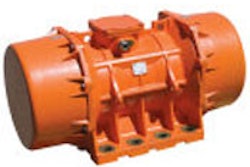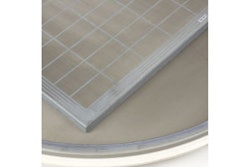RIVA, Md. (AP) — Blue crabs in the Chesapeake Bay are at record numbers, although there has also been a mysterious drop in adult females, according to an annual winter survey released Thursday.
The survey found an estimated 764 million crabs in the bay, nearly two-thirds more than last year. The increase was highest among juvenile crabs, which totaled 587 million, nearly triple last year's total.
Maryland Gov. Martin O'Malley said the numbers, the highest level since 1993, are "good news for watermen, it's good news for the bay, it's good news for jobs, it's good news for our economic recovery."
The result are the latest evidence of a continuing rebound for the bay's biggest money maker following severe harvest restrictions put in place in Maryland and Virginia in 2008 following a population drop. The comeback was interrupted last winter when extreme cold killed off nearly a third of the bay's crabs, but the harvest restrictions kept the population above recovery targets.
The numbers did contain a bit of a mystery. The number of spawning age females dropped from 190 million to 97 million, but the preliminary harvest numbers show they were not overharvested. Scientists said they were not sure if the number of adult females is actually down, or if they moved outside of survey areas because of an extremely wet fall and warm winter.
Two major storms last fall dumped huge amounts of fresh water as well as tons of mud in debris into the bay, raising questions about the impact on crabs, oysters and others species.
Female crabs are known to head south to saltier water to spawn and the tremendous flows of fresh water last autumn may have pushed them even further south, researchers said.
O'Malley said the new numbers were "living evidence, living proof" that management of the fishery works and "'one of the clearest indications that the health of the bay is not a hopeless cause." The survey is conducted by dredging dormant crabs from the bay bottom.
Tom Miller, director of the University of Maryland Center for Environmental Science Chesapeake Biological Laboratory, said warm temperatures also may mean the female crabs were active and not hibernating when the dredge passed by.
"They may have heard it coming," Miller said.
Fisheries managers said they planned to stay the course and not change harvest quotas, but said catching those quotas should be easier this year.
Doug Domenech, Virginia's Secretary of Natural Resources, said called the rebound one of "the most successful fishery stock rebuilding programs ever, anywhere."
Chesapeake Bay Foundation Fisheries Director Bill Goldsborough said the results validates the steps taken and urged the two states to stay the course.
Despite the drop in females, Gibby Dean, president of the Chesapeake Bay Commercial Fishermen's Association, said the numbers were encouraging.
"It's tremendously important," Dean said. "I mean, there was a lot of sacrifice, a lot of contentious meetings to make all this possible."






















